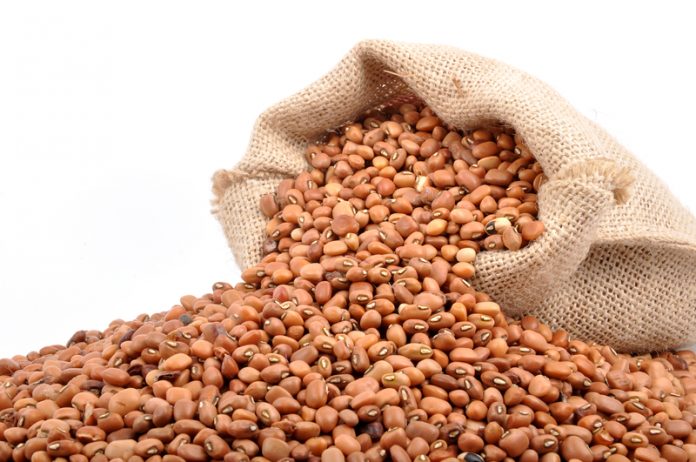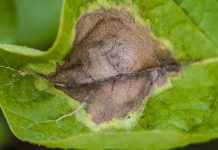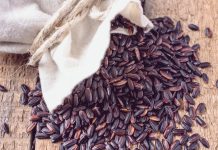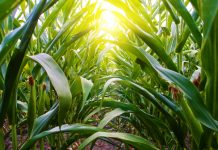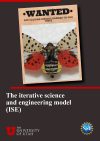Shawn Yarnes from The Integrated Breeding Platform highlights harnessing the genetic diversity of a dynamic crop, cowpea and why it is important today
Public plant breeders are working in international collaboration to harness the genetic diversity of cowpea (Vigna unguiculata). Cowpea is a leguminous crop critical to food and economic security in hot semi-arid regions of the world. Most of the 5.6 million tonnes of dried cowpea grain produced annually are grown in West and Central Africa1,2,3. Nigeria is the world’s largest producer of cowpea, followed by Niger and Burkina Faso4. Production is increasing, but yield is hampered by lack of cultivars with appropriate tolerance and resistance to biotic and abiotic stress5.
Cowpea is a dynamic crop and economic resource for farmers cultivating marginal agricultural land and is a food source during the “hungry season” when last year’s
grain stores are depleted. Cowpea is eaten as both a vegetable and as grain and can serve a dual-purpose as animal fodder. Variety development differs based on purpose, with grain-types tending to be erect and early maturing. Most grain-types mature less than 100 days after planting3,6. Green leaves and young pods are edible, and mature grain is high in protein (20-25%)1,4. Peas can be harvested fresh or dry but are generally collected fresh in dual-purpose cultivation to avoid leaf senescence before hay-harvest2,4.
Cowpeas are well adapted to sandy soils and low input farming practices. Little nitrogenous fertiliser is needed due to N-fixation by Bradyrhizobium spp. in root nodules7. Cowpeas enrich the soil with nitrogen and are often rotated and intercropped with: maize, sorghum,
millet, and cassava. In Sub-Saharan Africa rotating cereals after legumes yield significantly more than continuous cereal production, mostly due to enhanced soil nitrogen2. In regions with low soil phosphorus, cowpeas do benefit from P fertilisation. Variation in P-efficiency and N-fixation rates have been characterised, but not fully optimised in cowpea cultivars1,8.
Cowpeas are heat and drought tolerant, with some cultivars tolerating as little as 300mm of rain3. Cowpeas recover well from early season drought, but drought during flowering and pod-filling has lasting negative impacts on yield and quality even after re-watering. Drought tolerance is a complex trait, but many components are understood. Early maturation and other traits, like photoperiod-insensitivity, confer drought tolerance because they give farmers the flexibility to plant when rain is most likely to coincide with flowering4,6. Extra-early maturation (45-50 days after planting) identified in a landrace has recently been introgressed into a medium maturing Ghanaian variety6.
Many pests and diseases affect cowpea, resulting in partial to total crop loss. Management practices such as crop rotation, maintenance of soil fertility, and chemical applications can alleviate pests and diseases, but improved genetic resistance is imperative to sustainable
intensification of production. Fortunately, resistance to many pests (aphids, root-knot nematodes, foliar thrips, and Striga) and diseases (Fusarium wilt, bacterial blight, Macrophomina disease, and viruses) have been identified in diverse cowpea accessions4,5,9.
Cowpea’s tremendous genetic diversity is captured in germplasm collections worldwide, and new sources of alleles are continually being identified and genetically characterised. Important traits, such as black seed coat colour, pod shattering, and seed size have been recently mapped and candidate genes proposed10,11. The immediate breeding challenge is to combine multiple sources of genetic diversity into cultivars suitable to local environments and markets. Grain value is driven by the culinary preference for seed colour and texture.
One effort currently underway is the evaluation of a multiparent advanced generation inter-cross (MAGIC) population created from eight genetically diverse elite lines. The MAGIC population’s 305 lines contain previously uncharacterised genetic combinations5. The International Institute for Tropical Agriculture (IITA) along with several national agricultural research organisations are evaluating these lines across Sub-Saharan Africa and determining their suitability as breeding material and possible new varieties.
Publicly funded resources, like; gene banks, genomics initiatives, and data sharing platforms are revolutionising cowpea improvement. Playing a part in many improvement efforts is the IITA Genetic Resource Center whose aim to conserve and distribute diverse
cowpea accessions for research purposes. Genomic resources, such as the cowpea reference genome sequence, the Cowpea iSelect Consortium Array, and mapping populations, like the MAGIC, are unlocking our understanding of the genetic basis of traits12. An awareness of the genetic basis for desired traits and affordable SNP genotyping is making marker-assisted breeding possible, even for small remote breeding programmes.
The era of big data has arrived for cowpea breeding, along with the need to archive, query, and share data. Institutes, like IITA, and other international collaborations are using the Breeding Management System to record and share cowpea breeding data in a unified format. Continued characterisation of cowpea diversity and knowledge sharing are critical to fully harnessing available genetic diversity and maximising cowpea genetic gain for food security.
Acknowledgement
Thank you Maria Muñoz-Amatriaín and others at the University of California Riverside for your input and review of this article.
References
1 Carlos, G. (2000) Cowpea: Post Harvest Operation. Food and Agricultural Organization of United Nations: Rome, Italy.
2 Franke, A.C., et al. (2018) Sustainable intensification through rotations with grain legumes in Sub-Saharan Africa: A review. Agriculture, Ecosystems & Environment, 261: 172-185.
3 Freire Filho, F.R., et al. (2012) Production, breeding and potential of cowpea crop in Brazil. Embrapa Meio-Norte-Documentos (INFOTECA-E).
4 Boukar, O., et al. (2018) Cowpea (Vigna unguiculata): Genetics, genomics and breeding. Plant Breeding.
5 Kamara, A.Y et al. (2018) “Improving cultivation of cowpea in West Africa”. In Sivasankar, S., Bergvinson, D., Gaur, P., Kumar, S., Beebe,
S. and Tamò, M. Eds. Achieving sustainable cultivation of grain legumes. Volume 2: Improving cultivation of particular grain legumes. Cambridge: Burleigh Dodds Science Publishing. 1-18.
6 Owusu, E.Y. et al. (2018) Inheritance of Early Maturity in Some Cowpea (Vigna unguiculata (L.) Walp.) Genotypes under Rain Fed Conditions in Northern Ghana. Advances in Agriculture, 2018.
7 Karikari, B. et al. (2015) Growth, Nodulation and Yield Response of Cowpea to Phosphorus Fertilizer Application in Ghana. Journal of Agronomy, 14: 234-240.
8 Saidou, A.K., et al. (2007) Variability of cowpea breeding lines to low phosphorus tolerance and response to external application of Phosphorus. In Advances in Integrated Soil Fertility Management in sub-Saharan Africa: Challenges and Opportunities. Springer,
Dordrecht:413-422.
9 Huynh, B.L., et al. (2018). A multi-parent advanced generation inter-cross (MAGIC) population for genetic analysis and improvement of cowpea (Vigna unguiculata L. Walp.). The Plant Journal, 93(6), pp.1129-1142.
10 Herniter, et al. (2018) Identification of Candidate Genes Controlling Black Seed Coat and Pod Tip Color in Cowpea (Vigna unguiculata [L.] Walp). G3: Genes, Genomes, Genetics, 8(10), pp.3347-3355.
11 Suanum, W., et al. (2016) Co-localization of QTLs for pod fiber content and pod shattering in F2 and backcross populations between yardlong bean and wild cowpea. Molecular Breeding, 36(6) 80.
12 Muñoz-Amatriaín, M. et al. (2017) Genome resources for climate-resilient cowpea, an essential crop for food security. The Plant Journal, 89(5), pp.1042-1054.
Shawn Yarnes, PhD
Regional Deployment Manager
The Integrated Breeding Platform
Tel: +52 595 952 1900
s.yarnes@integratedbreeding.net
https://integratedbreeding.net/
www.twitter.com/IBPlatform



